Journal of Neurology, Neurological Science and Disorders
Ketamine; A better anti-depressant? An animal study evaluating the efficacy of citalopram, ketamine and their combination in animal models of depression
Salim Sheikh1,2, Pankaj Sonone2, Veena Verma2, Chakar Dhar Tripathi1,2, Bushra Ahmed Karim3* and Girish Gulab Meshram1
2Department of Pharmacology, VMMC & Safdarjung Hospital, New Delhi -110029, India
3Department of Public Health Dentistry, Jamia Millia Islamia, New Delhi – 110025, India
Cite this as
Sheikh S, Sonone P, Verma V, Tripathi CD, Karim BA, et al. (2021) Ketamine; A better anti-depressant? An animal study evaluating the efficacy of citalopram, ketamine and their combination in animal models of depression. J Neurol Neurol Sci Disord 7(1): 019-023. DOI: 10.17352/jnnsd.000043Background: Despite the availability of vast group of drugs, treatment of depression still remains unsatisfactory, largely due to differential efficacy of antidepressants at adequate doses resulting in treatment refractive depression. In addition, serious adverse effects of anti-depressants also lead to early withdrawal from treatment. One more important concern is the therapeutic lag of nearly 3-4 weeks, before some appreciable clinical effect. Therefore, newer agents with good safety profile, rapid onset of action and with substantial benefits in treating patients who are either refractory or resistant to conventional therapy, need to be explored.
Methods: 8 groups of 6 mice each were evaluated for anti-depressant effect in Tail Suspension Test and Forced Swim Test. Treatment used was normal saline (control), citalopram, ketamine and combination of ketamine with citalopram.
Results: Citalopram decreased the immobility time in both models but it was not significant in FST. Significant decrease in immobility time was observed in ketamine treated mice in both models. Ketamine and citalopram combination also decreased the immobility time significantly.
Conclusion: Ketamine have an antidepressant activity of its own, as shown in both TST & FST models. Additionally, it also potentiated the antidepressant effect of citalopram, which could be attributed to possible involvement of NMDA receptors and its interaction with the monoaminergic system.
Introduction
Depression is the most prevalent mood disorder in the world [1,2]. More than 30% of them have Major Depressive Disorder (MDD) [3], experiencing high relapse rate, residual symptoms, functional impairment, and an increase suicidal tendency [4]. Therefore, it’s prudent to not only gain more knowledge about the etiologies of depression, but also, explore novel agents for its treatment.
Presently, the armory of drugs against depression include tricyclic antidepressants, monoamine oxidase inhibitors, norepinephrine and serotonin reuptake inhibitors, Serotonin-Norepinephrine Reuptake Inhibitors (SNRIs), Selective Serotonin Reuptake Inhibitors (SSRIs) and atypical anti-depressants [5]. The neurotransmitters targeted are primarily serotonin (5-HT), norepinephrine and dopamine. However, SNRI and SSRI drugs are preferred owing to less adverse effects and low toxicity profile [6,7].
Despite the availability of vast group of drugs, treatment of depression still remains unsatisfactory, largely due to differential efficacy of antidepressants at adequate doses resulting in treatment refractive depression [8]. In addition, serious adverse effects of anti-depressants also leads to early withdrawl from treatment [9]. One more important concern is the therapeutic lag of nearly 3-4 weeks, before some appreciable clinical effect. This is the period when there is high risk of suicide [10]. Therefore, newer agents with good safety profile, rapid onset of action and with substantial benefits in treating patients who are either refractory or resistant to conventional therapy, need to be explored.
In this pursuit, focus has now shifted to drugs targeting the N-Methyl-D-Aspartate receptor family. Several preclinical studies have shown drugs targeting NMDA receptor have enhanced antidepressant effect and decreased therapeutic lag [11-13]. Ketamine is a non-competitive NMDA antagonist and a derivative of Phencyclidine (PCP) which was found to produce rapid, robust and persistent antidepressant effects in clinical study [14]. Therefore, the present study was carried out to elucidate the role of ketamine in animal models of depression.
Materials and Method
Ethical considerations
All experimental procedures were carried out after being approved by the Institutional Animals Ethics Committee. The study was conducted in accordance with the guidelines of the Committee for the Purpose of Control and Supervision of Experiments on Animals (CPCSEA). Each animal was used only once in the experimental procedures.
Study design and setting
The study was conducted in the department of Pharmacology of a tertiary care teaching hospital in New Delhi. Swiss Albino male mice weighing between 22-25g were utilized for this study. The animals were kept under standard laboratory conditions. The animals were housed in standard laboratory conditions (12-h light/dark cycle, 21 ± 1°C, and relative humidity of 55±5%) with free access to food and water prior to the experiments. After 7 days of acclimatization to laboratory conditions, the animals were randomly allocated into the different (08) groups (Table 1), each group comprising of six mice. The control groups were studied concurrently with the experimental groups.
Experimental drugs
The normal saline and ketamine were procured from the drug store department of the hospital, whereas Citalopram was provided by Sigma Aldrich, India. The treatment was given as per treatment design (Table 2). The drugs were injected intraperitonealy (ip) 60 min before conducting the test session. Control group received appropriate vehicle (normal saline). The dose of ketamine and citalopram for present study was based on doses used in previous studies from literature [15,16]. While giving drugs in combination, doses of drugs were reduced (Figure 1).
Animal models of depression
Experimental animals were assessed with the Forced Swim Test (FST) and Tail Suspension Test (TST), both being valid animal models for depression [17-21].
The FST is a rodent behavioral test used for evaluation of antidepressant drugs. Mice were placed in an inescapable transparent tank that is filled with water and their escape related mobility behavior was measured. The cylindrical tanks of transparent Plexiglas (30 cm height x 20 cm diameters) were used. The water level was 15 cm from the bottom and marked on the tank to ensure that the volume of water remained consistent over experiment. The dimensions of the tanks were selected in a way that the mice would not be able to touch the bottom of the tank, either with their feet or their tails, during the swimming test. The height of the tank was high enough to prevent the mice escaping from the tank. The apparatus was cleaned thoroughly, and water was changed for each mice. Two swimming sessions were conducted and videotaped: 15 min on the 1st day as a training session followed by 6min (test session) on the 2nd day. After each test, the mice were dried and kept warm under a heating bulb for 30 min before being returned to their home cages. Mice were injected with single dose test drugs just before conducting test session. Behavior was videotaped and immobility time was recorded.
The TST was developed as a rodent screening test for potential (human) antidepressant drugs. In this test mice were both acoustically and visually isolated and suspended 50cm above the floor by adhesive tape placed approximately 1 cm from the tip of the tail. Immobility time was recorded during a 6 min period. Mice were considered immobile only when they were completely motionless. The parameter recorded was the time spent immobile.
Statistical analysis
The mean+SEM of the immobility time was calculated and the data were analysed using one way analysis of variance (ANOVA) followed by Tukey”s multiple range test, wherever applicable. P values less than 0.05 were considered significant.
Results
In the TST, on comparison with the control group, the groups treated with citalopram, ketamine and their combination demonstrated a significant (p <0.05) reduction in the immobility time and increase in the time spent in struggle. However, the decrease in immobility time was more pronounced with the groups treated with ketamine and its combination with citalopram than with citalopram itself (Figure 2).
In the FST, the group treated with citalopram alone showed a non-significant (P >0.05) decrease in the immobility time as compared to the control group. Whereas, other groups treated with ketamine alone and its combination with citalopram showed a significant reduction of the immobility time and increase in the duration of struggle (Figures 3,4). However, when the combination was compared with citalopram group, not much change in immobility time was observed, and the effect was not significant.
Discussion
Major challenges in modern day anti-depressant therapy are delay in the therapeutic response and inadequate improvement along with poor patient compliance due to adverse effects [8]. Therefore, newer drugs with rapid onset and longer sustainable effect are the need of the hour. Ketamine has fast acting and sustainable antidepressant effect, making it a valuable next generation of rapidly acting antidepressants [13,14,22]. In our study, we investigated the possible antidepressant action of citalopram (SSRI) and ketamine (NMDA receptor antagonist) in animal models of depression (TST & FST). These tests have good predictive validity and allow rapid and economical detection of drugs with potential antidepressant like activity. Testing of new substances in these tests allow a simple assessment of their potential antidepressant activity by the measurement of their effect on immobility time [23].
In our study citalopram caused significant reduction in the immobility time and increased the struggle period in TST, further strengthening its anti-depressant effect [24]. This effect of SSRIs is due to inhibition of SERT, leading to increase availability of serotonin at the postsynaptic receptor site due to reuptake inhibition. However, citalopram failed to show significant anti-depressant effect in FST. It is due to the use of single dose only because of constraint of animal. This is similar to other studies where single dose of citalopram did not decreased the immobility time significantly [25,26]. Interestingly, chronic administration of citalopram and fluoxetine caused significant reduction in the immobility time [25-27], probably explaining the therapeutic lag seen in SSRIs.
On the other hand, ketamine showed significant decrease in immobility time both in FST & TST models. This is similar to the study showing dose dependent decrease in immobility time by MK-801, ketamine & imipramine, but not by fluoxamine [28]. This effect of ketamine in present study could probably be explained by an NMDA receptor antagonism. The other reasons for the decrease are increase in Brain Derived Neurotropic Factor level and activation of Mammalian Target of Rapamycin (mTOR), leading to an increase in synaptic signaling protein in the pre frontal cortex [29-31].
In our study, combination of ketamine with citalopram showed significant reduction in the immobility time and increase in struggle time in both the models as compared to control group. This is attributed to synergistic activity of citalopram with ketamine as seen in earlier studies [28,32,33]. Additionally, ketamine affect mood due to its interaction with monoamine and opiate systems [34-36].
Conclusions
Ketamine have an antidepressant activity of its own, as shown in both TST & FST models. Moreover, it also potentiated the antidepressant effect of citalopram, which could be attributed to possible involvement of NMDA receptors and its interaction with the monoaminergic system.
Author contributions
All authors have accepted responsibility for the entire content of this manuscript and approved its submission.
Availability of data
The data that support the findings of this study are available from the corresponding author upon reasonable request. Some data may not be made available because of privacy or ethical restrictions.
- Moussavi S, Chatterji S, Verdes E, Tandon A, Patel V, et al. (2007) Depression, chronic diseases, and decrements in health: results from the World Health Surveys. Lancet 370: 851-858. Link: https://bit.ly/39GAI4C
- Kessler RC, Berglund P, Demler O, Jin R, koretz D, et al. (2003) The epidemiology of major depressive disorder: results from the National Comorbidity Survey Replication(NCS-R). JAMA 289: 3095-3105. Link: https://bit.ly/3rOnk4Q
- Thase ME (2000) Treatment of severe depression. J Clin Psychiatry 61: 17-25.
- Pattanayak RD, Sagar R (2014) Depressive Disorders in Indian Context : A Review and Clinical Update for Physicians. J Assoc Physicians India 62: 827-832. Link: https://bit.ly/39IQagH
- Mendlewicz J (2001) Optimising antidepressant use in clinical practice: towards criteria for antidepressant selection. Br J Psychiatry 42: S1- S3. Link: https://bit.ly/39JhlIi
- Ellis P (2004) Australian and New Zealand clinical practice guidelines for the treatment of depression. Aust N Z J Psychiatry 38: 389-407. Link: https://bit.ly/2PsIlVG
- Roose SP (2003) Compliance: the impact of adverse events and tolerability on the physician’s treatment decisions. Eur Neuropsychopharmacol 13: S85- S92. Link: https://bit.ly/3cPV3qh
- Al-Harbi KS (2012) Treatment-resistant depression: therapeutic trends, challenges, and future directions. Patient Prefer Adherence 6: 369-388. Link: https://bit.ly/31Kh9Uz
- Cartwright C, Gibson K, Read J, Cowan O, Dehar T (2016) Long-term antidepressant use: patient perspectives of benefits and adverse effects. Patient Prefer Adherence 10: 1401-1407. Link: https://bit.ly/2PWX2Qu
- Selvaraj V, Veeravalli S, Ramaswamy S, Balon R, Yeragani VK (2010) Depression, suicidality and antidepressants: A coincidence? Indian J Psychiatry 52: 17-20. Link: https://bit.ly/39Lsyb8
- Lipson R, Beyer S, Hughes CE, Khawaja ZA, Rajarao X, et al. (2007) Differentiating antidepressants of the future: Efficacy and safety. Pharmacol Ther 113: 134-153. Link: https://bit.ly/3cO62R2
- Szewczyk B, Pałucha-Poniewiera A, Poleszak E, Pilc A, Nowak G (2012) Investigational NMDA receptor modulators for depression. Expert Opin Investig Drugs 21: 91-102. Link: https://bit.ly/3rSVqod
- Zarate CA, Singh JB, Carlson PJ, Brutsche NE, Ameli R (2006) A randomized trial of an N- methyl-D-aspartate antagonist in treatment-resistant major depression. Arch Gen Psychiatry 63: 856-864. Link: https://bit.ly/39FFAHq
- Skolnick P, Popik P, Trullas R (2009) Glutamate-based antidepressants: 20 years on. Trends Pharmacol Sci 30: 563-569. Link: https://bit.ly/3cRbAKI
- Sheikh S, Sonone P, Tripathi CD, Verma V, Karim BA (2020) An experimental study targeting N-methyl-D-aspartate receptor in depression; beyond ketamine. Ann Psychiatry Treatm 4: 057-061. Link: https://bit.ly/3wsepcC
- Baumann P (1996) Pharmacology and pharmacokinetics of citalopram and other SSRIs. Int Clin Psychopharmacol 11: 5-11. Link: https://bit.ly/3mkSFe5
- Porsolt RD, Le Pichon M, Jalfre M (1977) Depression: a new animal model sensitive to antidepressant treatments. Nature 266: 730-732. Link: https://bit.ly/2Py9u9q
- Borsini F, Meli A (1988) Is the forced swimming test a suitable model for revealing antidepressant activity? Psychopharmacology 94: 147-160. Link: https://bit.ly/3cO1ie0
- Lucki I (1997) The forced swimming test as a model for core and component behavioral effects of antidepressant drugs. Behav Pharmacol 8: 523-553. Link: https://bit.ly/3uoykHS
- Steru L, Chermat R, Thierry B, Simon P (1985) The tail suspension test: a new method for screening antidepressants in mice. Psychopharmacology 85:367-370. Link: https://bit.ly/3cPZotp
- Cryan JF, Mombereau C, Vassout A (2005) The tail suspension test as a model for assessing antidepressant activity: review of pharmacological and genetic studies in mice. Neurosci Biobehav Rev 29: 571-625. Link: https://bit.ly/2PBtYOz
- Machado-Vieira R, Salvadore G, Diazgranados N, Zarate CA (2009) Ketamine and the next generation of antidepressants with a rapid onset of action. Pharmacol Ther 123: 143-150. Link: https://bit.ly/3t3TEBS
- Castagne V, Moser P, Roux S, Porsolt RD (2011) Rodent models of depression: forced swim and tail suspension behavioral despair tests in rats and mice. Curr Protoc Neurosci 8: 10. Link: https://bit.ly/3fNWszD
- Sanchez C, Meier E (1997) Behavioral profiles of SSRIs in animal models of depression, anxiety and aggression. Are they all alike? Psychopharmacology 129: 197-205. Link: https://bit.ly/3rQHT0q
- Mombereau C, Gur TL, Onksen J, Blendy JA (2010) Differential effect of acute and repeated citalopram in mouse model of anxiety and depression. Int J Neuropsychopharmacol 13: 321-334. Link: https://bit.ly/31OYN4R
- Dulawa SC, Holick KA, Gundersen B, Hen R (2004) Effects of Chronic Fluoxetine in Animal Models of Anxiety and Depression. Neuropsychopharmacology 29: 1321-1330. Link: https://bit.ly/3moP4vB
- Cryan JF, Page ME, Lucki I (2005) Diffrential behavioral effect of the antidepressant reboxtine, fluoxetine and moclobemide in a modified forced swim test following chronic treatment. Psychopharmacology 182: 335-344. Link: https://bit.ly/3rOoI7y
- Chaturvedi HK, Bapna JS, Chandra D (2001) Effect of fluvoxamine and N-methyl-D-aspartate receptor antagonists on shock-induced depression in mice. Indian J Physiol Pharmacol 45: 199-207. Link: https://bit.ly/3wsRNJa
- Reus GZ, Stringari RB, Kirsch TR, Fries GR, Kapczinski F, et al. (2010) Neurochemical and behavioural effects of acute and chronic memantine administration in rats: Further support for NMDA as a new pharmacological target for the treatment of depression? Brain Res Bull 81: 585-589. Link: https://bit.ly/3wD68Tw
- Autry AE, Adachi M, Nosyreva E, Na ES, Los MF, et al. (2011) NMDA receptor blockade at rest triggers rapid behavioural antidepressant responses. Nature 475: 91-95. Link: https://bit.ly/3fPpZsm
- Mathew JS, Shah A, Lapidus K, Clark C, Jarun N, et al. (2012) Ketamine for Treatment-Resistant Unipolar Depression. CNS Drugs 26: 189-204. Link: https://bit.ly/39ISjJh
- Rogoz Z, Skuza G, Maj J, Danysz W (2002) Synergistic effect of uncompetitive NMDA receptor antagonists and antidepressant drugs in the forced swimming test in rats. Neuropharmacology 42: 1024-1030. Link: https://bit.ly/3umFegz
- Berman RM, Cappiello A, Anand A, Oren DA, Heninger GR, et al. (2000) Antidepressant effects of ketamine in depressed patients. Biol Psychiatry 47: 351-354. Link: https://bit.ly/3fJskp0
- Lindefors N, Barati S, Connor O (1997) WTO: Differential effect of single and repeated ketamine administration on dopamine, serotonin, and GABA transmission in rat medial prefrontal cortex. Brain Res 759: 205-212. Link: https://bit.ly/3fJruIz
- Elliot K, Kest B, Man A, Kao B, Inturrisi CE (1995) N-Methyl-D-Aspartate(NMDA) receptors, µ and κ opiod tolerance, and perspective on new analgesic drug development. Neuropsycopharmacol 13: 347-356. Link: https://bit.ly/39HarDt
- Wong CS, Cherng CH, Luk HN, Ho ST, Tung CS (1996) Effect of NMDA receptor antagonist on inhibition of morphine tolerance in rats: Binding at µ-opiod receptors. Eur J Pharmacol 297: 27-33. Link: https://bit.ly/39IpFYM
Article Alerts
Subscribe to our articles alerts and stay tuned.
 This work is licensed under a Creative Commons Attribution 4.0 International License.
This work is licensed under a Creative Commons Attribution 4.0 International License.
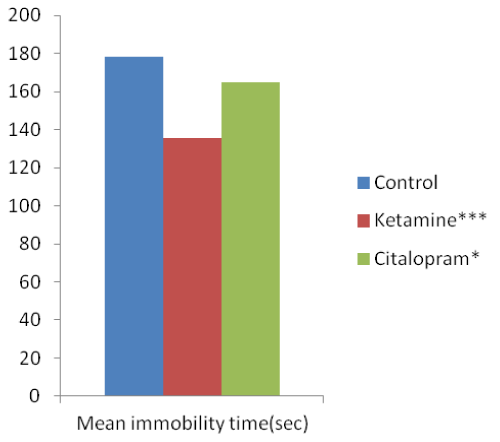
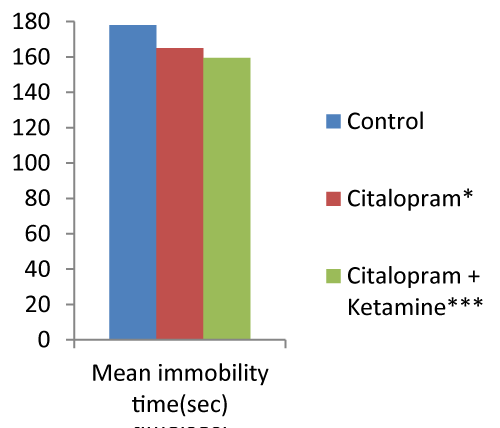
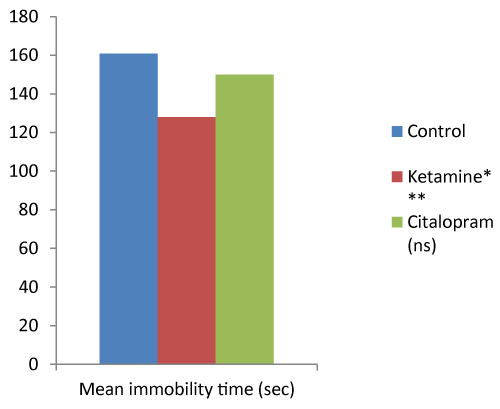
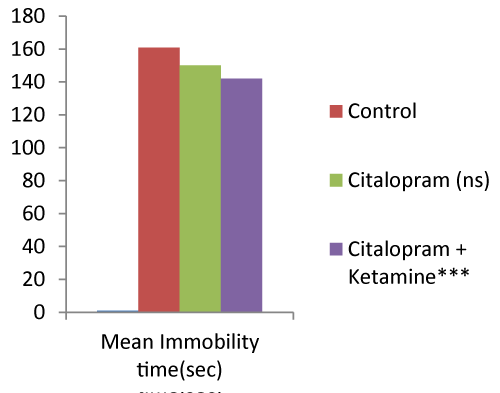
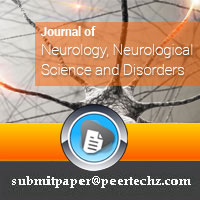
 Save to Mendeley
Save to Mendeley
